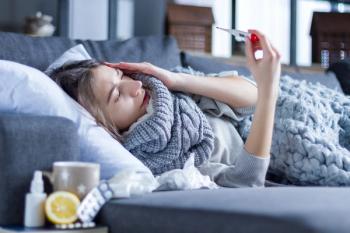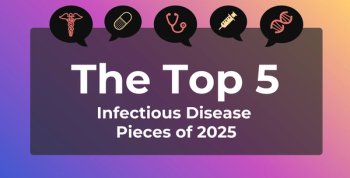
What Implications Does Stress Have in Development of Sleep Apnea?
In medical and nursing staff experiencing insomnia while working in Wuhan, China, during the coronavirus disease 2019 epidemic, stress was a notable predictor in those with comorbid sleep apnea–hypopnea syndrome, according to study findings.
In medical and nursing staff experiencing insomnia while working in Wuhan, China, during the coronavirus disease 2019 (COVID-19) epidemic, stress was a notable predictor in those with comorbid
The psychological implications of COVID-19 have been widely reported, with nearly 7 in 10 US employees indicating in a survey that the pandemic is the most stressful time of their entire professional career. Moreover, this risk may be further amplified in health care workers who are on the front lines of this crisis.
“When facing stressful situations, individuals will need to respond to drastic changes in the external environment, which may cause symptoms such as sleep suppression and increased wakefulness, thus increasing the occurrence of insomnia (including difficulty falling asleep, difficulty maintaining sleep and waking up early), daytime sleepiness, nightmares and daytime dysfunction, among other sleep-related disorders,” explained the study authors.
In a prior
Study authors of the current study highlight that SAHS is a growing comorbid condition of insomnia, which may be further exacerbated during stress. This association could prove harmful for health care workers, as this stress-related comorbidity can increase the risk of cardiovascular and cerebrovascular diseases, noted the study authors.
Researchers sought to examine the prevalence of these comorbid conditions related to stress “to establish a reliable basis to provide sleep intervention.” They monitored and screened the medical and nursing staff working in hospitals designated for COVID-19 in the Wuhan area who reported symptoms of insomnia (n = 26).
Participants were examined via medical ring-shaped pulse oximeters that monitored sleep overnight, with additional input derived from the
From the study cohort, 10 participants (38.5%) experiencing insomnia demonstrated comorbid moderate to severe SAHS. These participants were found to exhibit significantly higher ISI (P = .034) and SRQ-20 (P = .016) scores when compared with those solely with insomnia.
After conducting a correlation analysis (r), ISI scores were found to be positively correlated with total sleep time (TST) (r = 0.435; P = .026) and negatively correlated with deep sleep (r = −0.495; P = .010). SRQ-20 scores were also found to be positively correlated with TST (r = 0.454; P = .020), sleep efficiency (r = 0.389; P = .050), and rapid eye movement sleep percentage (r = 0.512; P = .008).
When examining potential risk factors, SRQ-20 (odds ratio [OR], 1.516; 95% CI, 1.053-2.180) and sex (OR, 11.56; 95% CI, 1.037-128.9) were highlighted as predictors for insomnia with comorbid SAHS.
“Medical and nursing staff with insomnia showed clear signs of comorbid sleep apnea attributable to stress,” said the study authors.
Researchers note that although sedative-hypnotic drugs such as benzodiazepines may prove effective for symptoms such as anxiety, tension, and insomnia after stress, they have been found to potentially worsen SAHS symptoms.
“When assessing the situation during future emergency rescues, it is necessary to combine symptoms, signs and other clinical data to thoroughly screen insomnia patients with comorbid SAHS and avoid the adverse reactions caused by benzodiazepines,” concluded the study authors.
Reference
Zhuo K, Gao C, Wang X, et al. Stress and sleep: a survey based on wearable sleep trackers among medical and nursing staff in Wuhan during the COVID-19 pandemic. Gen Psychiatr. Published online June 16, 2020. doi:10.1136/gpsych-2020-100260
Newsletter
Stay ahead of policy, cost, and value—subscribe to AJMC for expert insights at the intersection of clinical care and health economics.








































